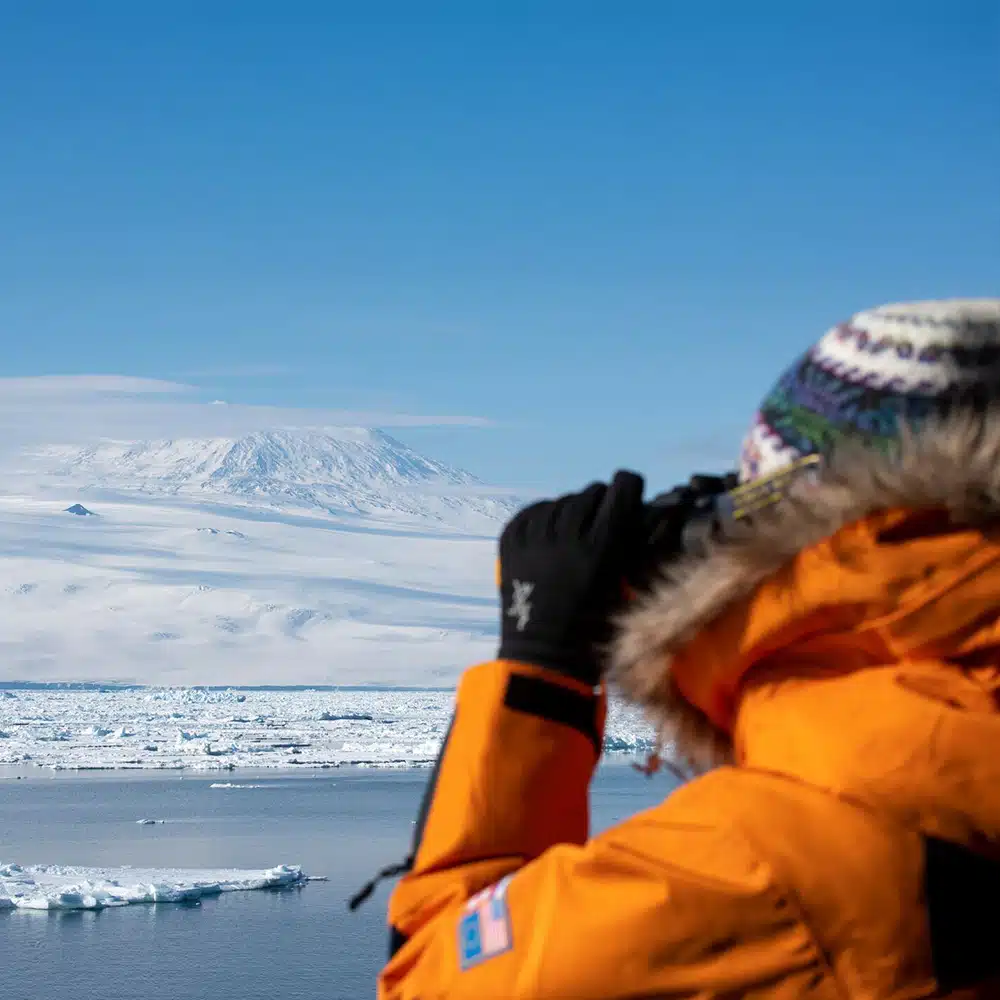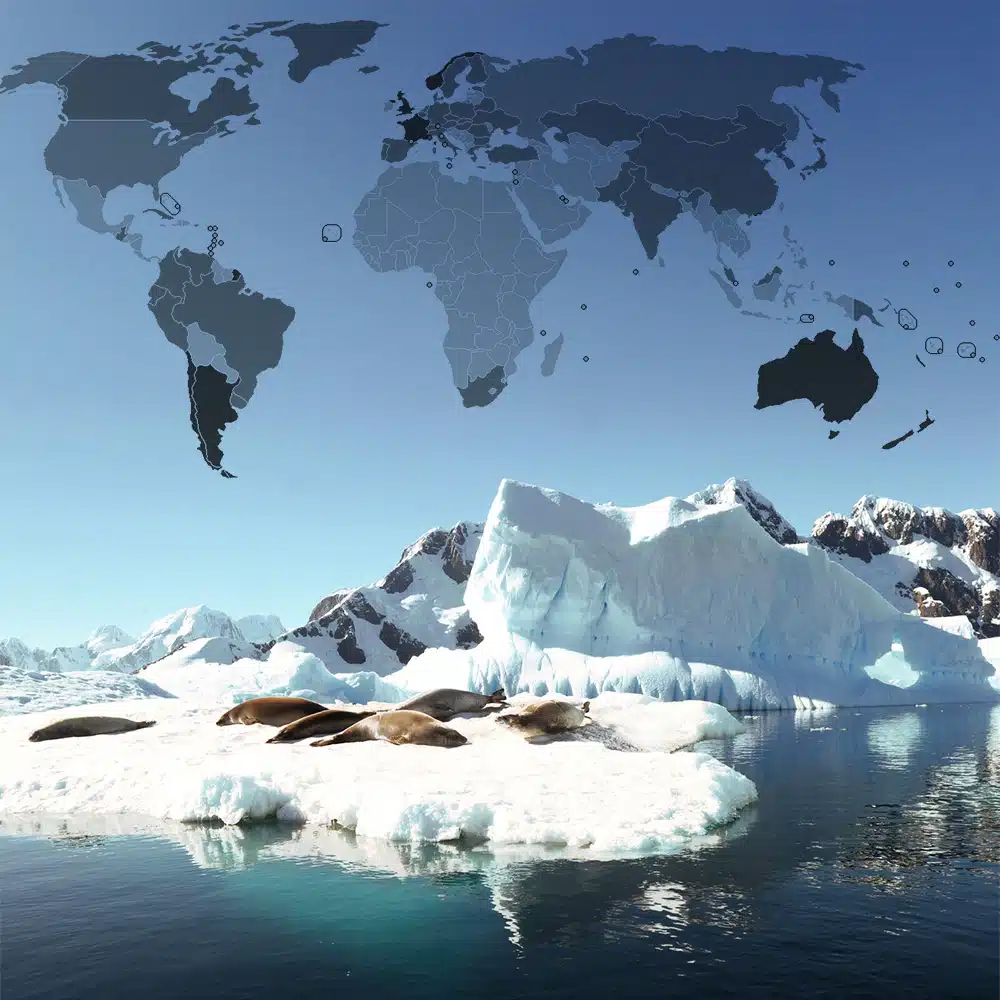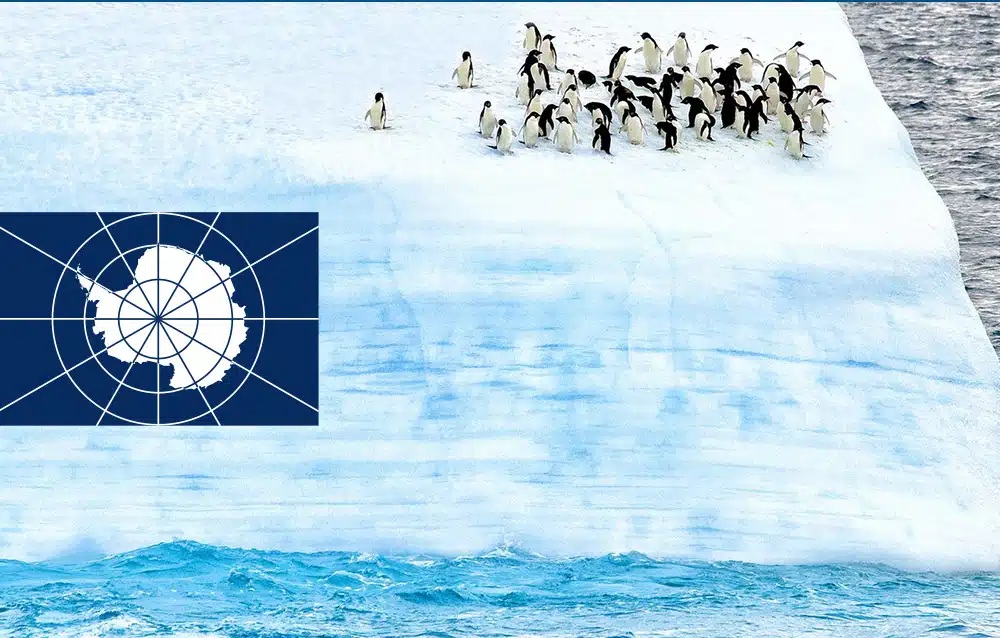Antarctica has long captured the imagination of explorers, scientists, and adventurers. Its icy landscapes, majestic wildlife, and rich contributions to marine and biological science have made it a focal point for PONANT travelers and a model for international cooperation. At the heart of this collaboration lies the Antarctica Treaty of 1959.
As any PONANT traveler who has visited Antarctica knows, it is easy to get swept up in the breathtaking beauty of the great white wilderness. Ice shelves tower over a metallic-blue sea, massive icebergs drift in tranquil bays, penguin rookeries waddle along icy shores, and sea lions bask on ice floes. All is silent and sublime.
You might think that geopolitics has no place here. But it most certainly does. Historians and Antarctica experts will tell you that the continent remains pristine and undefiled thanks in part to the Cold War of the 1950s. With concerns about international boundaries and military build-ups front and center, a handful of nations rose to the challenge of deciding who exactly Antarctica belongs to.

A Prelude To Peace
In the aftermath of World War II, the world was grappling with the realities of the Cold War. Nations were locked in ideological battles, the rise of a global military industry, and territorial disputes. Amidst this tension, Antarctica remained untouched by conflict. Over time, numerous countries laid claim to portions of the continent, leading to concerns about potential disputes over sovereignty and exploitation of the area’s massive untapped natural resources.
By the late 1950s, seven countries—Argentina, Australia, Chile, France, New Zealand, Norway, and the United Kingdom—had asserted territorial claims. Meanwhile, the Soviet Union began to show interest, adding to the complexity of international relations. Simultaneously, scientific exploration began to reveal the continent’s vast potential for research. The need for a framework to manage activities in Antarctica became increasingly urgent.
The Road to the Treaty
As that framework emerged, it became clear that cooperative governance would have to be its foundation. Representatives of 12 nations convened in Washington, D.C., between June 1958 and October 1959, to lay that foundation. Delegates included representatives from the above countries, including the Soviet Union, and the United States. The attendees concluded that Antarctica should be used for peaceful purposes and scientific exploration. This gathering marked a rare moment of collaboration between East and West during the height of the Cold War.
After months of challenging negotiation, the Antarctica Treaty was signed on December 1, 1959. It took effect on June 23, 1961, establishing strict guidelines that still today shape international relations in Antarctica.

Key Terms of the Antarctica Treaty
Considered by many the first arms control agreement of the Cold War, the Antarctica Treaty is brief in length and succinct in tone. Its 14 articles lay out crucial principles that have steered human activity in the region.
A good deal of that human activity entails, of course, expedition travel such as ours. As the terms of the treaty have evolved over the years, PONANT has meticulously followed its amendments and resolutions designed for environmental protection and visitor safety. We are guided daily by the practical guidelines established for tour operators and guides.
Here are some of the key terms of the original treaty of 1959:
-
- Peaceful Use. The treaty declares that Antarctica shall be used exclusively for peaceful purposes. Military activity, including the establishment of military bases and weapons testing, is explicitly prohibited.
- Scientific Cooperation. The treaty encourages international scientific collaboration and the sharing of research findings. It establishes Antarctica as a global commons, where nations can work together to conduct research that benefits humanity.
- Sovereignty Claims. The treaty puts a hold on territorial claims and suspends any new claims while encouraging the parties to negotiate their existing claims peacefully. This provision was critical in preventing disputes over sovereignty and resources.
- Nuclear Prohibition. The treaty prohibits the testing and disposal of nuclear weapons and radioactive waste in Antarctica, ensuring the region remains a safe haven for scientific inquiry and wildlife.
- Inspection Rights. To promote transparency, the treaty allows for inspections of research stations and facilities by any of the signatory nations, fostering trust and accountability.

The Enduring Impact
The Antarctica Treaty is a remarkable success story in international diplomacy. Today, over 57 nations are committed to its principles.
In an era when geopolitical tensions can escalate quickly, the Antarctica Treaty serves as a beacon of hope and a legacy of peace. It reminds us that nations can come together to prioritize shared interests over territorial ambitions, particularly in a world facing pressing environmental issues. In this way, Antarctica symbolizes the possibility of harmony and cooperation in an often-divided world.

Discover the Great White Continent
When you embark on a PONANT Cruise to explore the breathtaking landscapes and magnificent wildlife of Antarctica, you’ll immerse yourself in nature’s beauty, for sure. You’ll also witness a place that represents the best of us, proof that even in the most challenging times, collaboration and goodwill can triumph.



